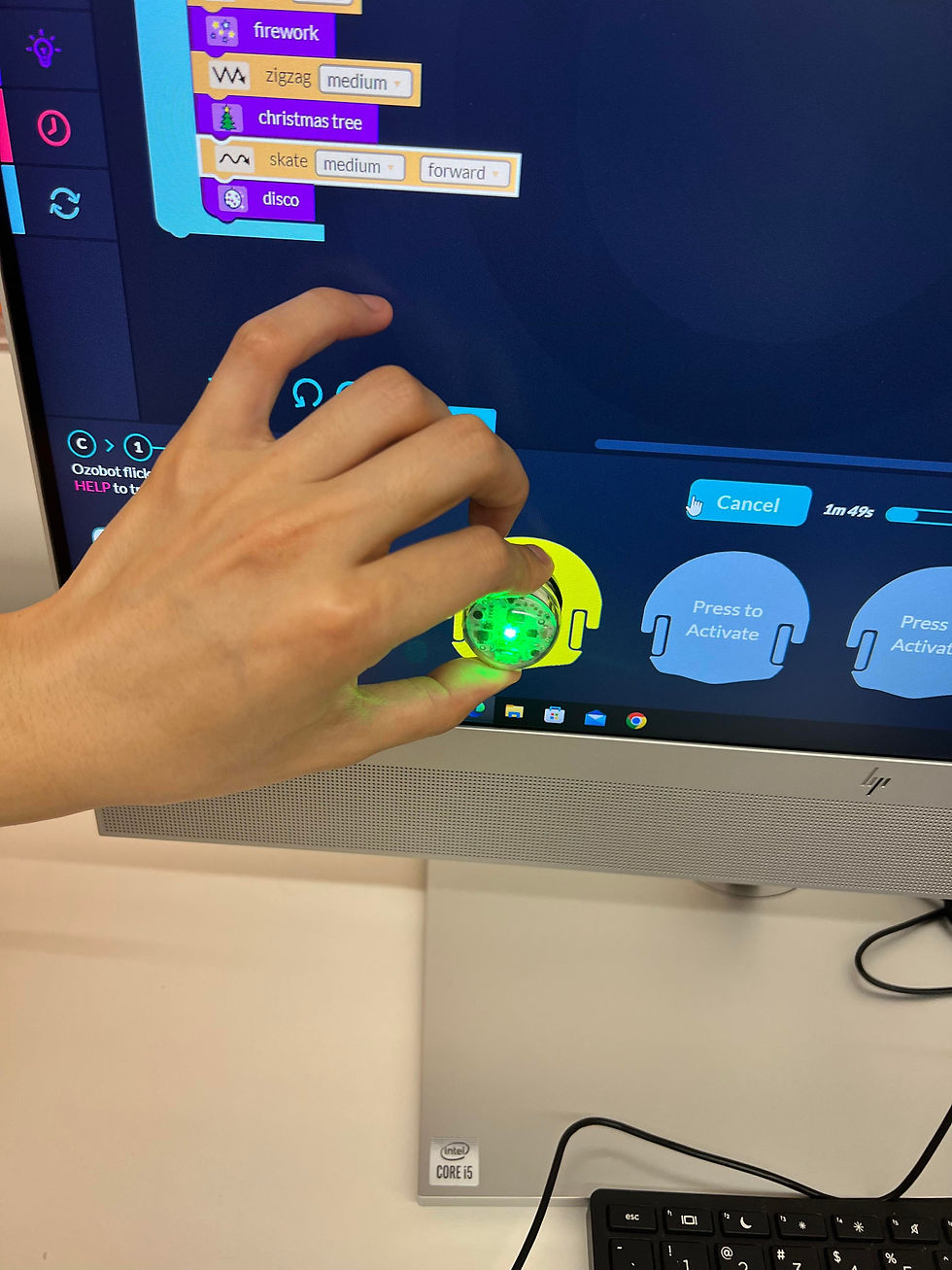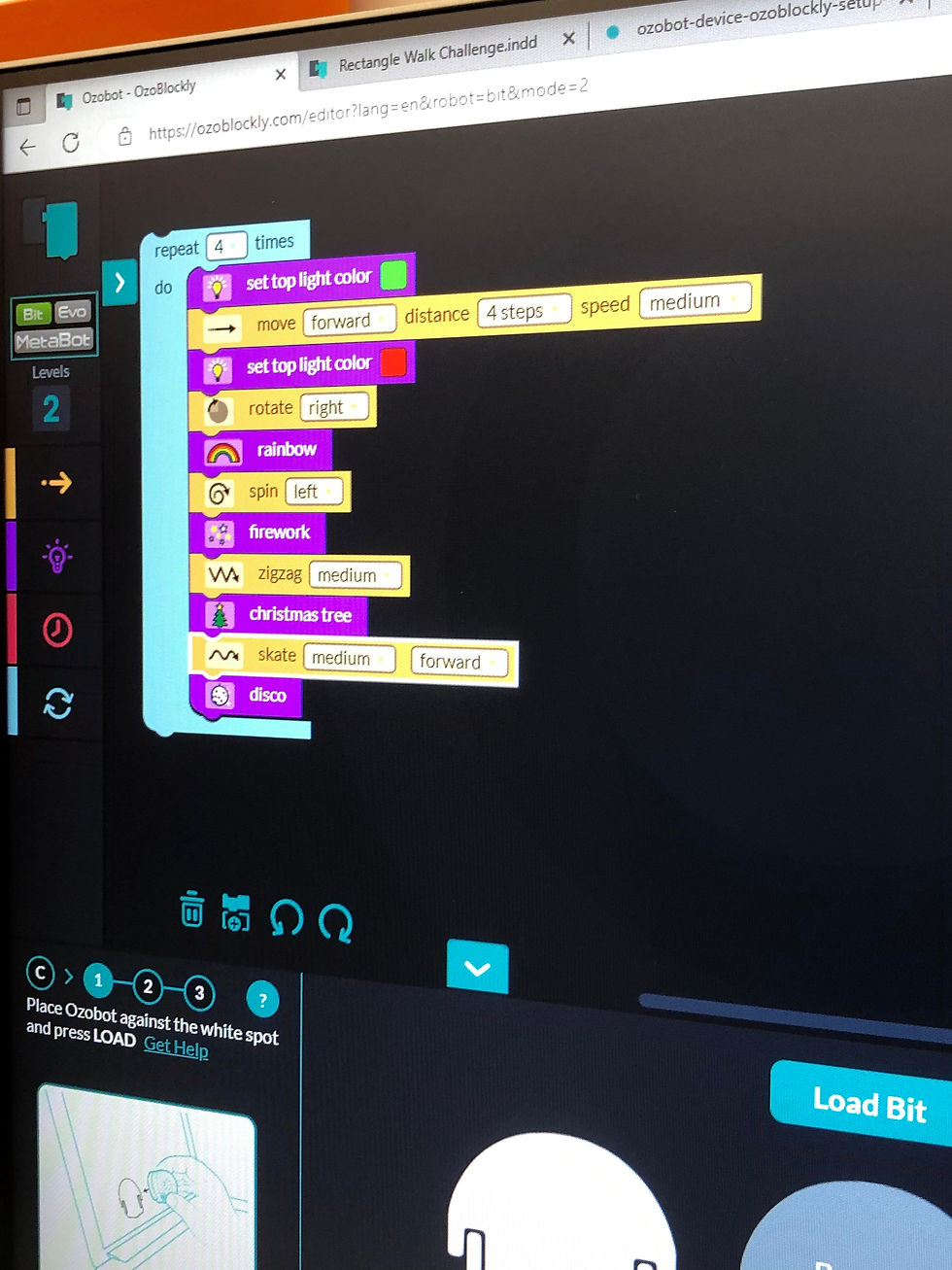Blog 2 - Week 2 - The Amazingness of Ozobots!
- William Lee
- Mar 26, 2023
- 2 min read
Updated: Apr 11, 2023
Creativity
Ozobots are tiny, computerised machines that can be used in a variety of settings, especially in high schools. These robots are designed to assist students learning about coding and robotics in a fun and engaging way. Ozobots can be utilised to teach students about computer programming tools such as loops, conditionals and variables.
Ozobots are able to provide hands-on learning experience for students and they are able to collaborate to code the robots to perform different tasks which assists in developing their teamwork and problem-solving skills (Mayerová et al., 2019). Furthermore, Ozobots can be applied in a variety of subjects such as Maths and Science to help students understand complex concepts.


One way Ozobots stimulates creativity is by allowing students to create their own unique programs for the robots to follow. Students are able to use their imagination to design mazes, obstacles, courses and other challenges for the Ozobots to navigate through. This prompts them to think creatively about how they can use these robot sensors in order to complete these tasks.
Another way Ozobots promotes creativity is by integrating with other classroom tools and technologies such as a computer, iPad, tablets. TVs and phones. Teachers can use Ozobots as part of a larger project or lesson plan incorporating them into activities such as Science experiments or art projects.
Limitations
Some schools may have limited access to funding and thus may not be able to afford a large number of Ozobots for their students' learning. Another key limitation of the Ozobots is that they have limited memory capacity (Czakóová & Csóka, 2022). They can only store a few lines of code at a time. They are also limited in their movements as they can only move forward or backward and turn left or right. This restricts the range of activities that can be done on them. There are also some slight limitations in terms of negative aspects of these Ozobots, such as the fact that you must hold them up to a specific area on a screen for 1- 3 minutes, depending on how many commands you have put into your computer, which can be a tiring and irritating aspect of this technological device.
References
Czakóová, K., & Csóka, M. (2022). OZOBOT CODING CHALLENGES IN ELEMENTARY SCHOOL INFORMATICS. INTED2022 Proceedings, 5834–5840. https://doi.org/10.21125/inted.2022.1491
Mayerová, K., Kubincová, Z., & Veselovská, M. (2019). Creating Activities for After School Robotic Workshop with Ozobot Evo. 2019 18th International Conference on Information Technology Based Higher Education and Training (ITHET), 1–5. https://doi.org/10.1109/ITHET46829.2019.8937366


Hey William,
I liked the content presented in your post, however, I think the structure of information and images could be reworked to be read easier. Perhaps using the collapsible ribbons to hide your images could help.
The examples given, although effective in describing the practical uses of the technology, seem to be rather vague when referring to uses. I feel your post would have been accentuated if you were to give better examples of the uses in the classroom, particularly when talking about them in a "larger project or lesson plan"
Otherwise, I enjoyed the read!
Tyler England (3/4/23)